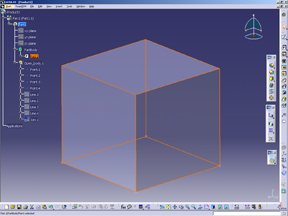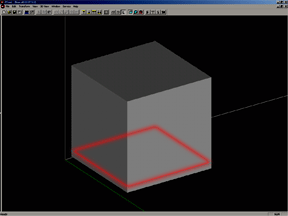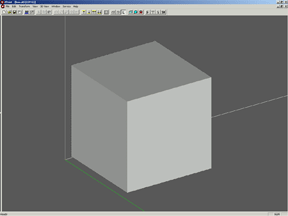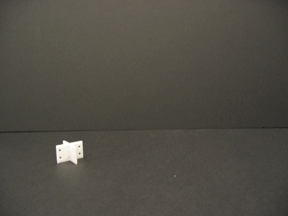<<
[ Han - Will ]
Machine: MACRO PICK-AND-PLACE SYSTEM - preliminary thoughts
by: Han Hoang and Will Lark
05.17.2004
MACRO-PICK AND PLACE SYSTEM [MPPS]
ABSTRACT
The current technology of any rapid prototyping machines can be
summarized in one, simple statement--The machine is always bigger
than the object it creates. From the current model of 3D printers
to any typical milling machines, these machines are generally the
size of cars, but they can only generate parts that are measured
in inches [Please see Figure A and B]. Our ultimate goal is to develop
a prototyping machine that can rapidly create parts and place
these parts to form a structure that is larger than the
envelope of the machine. We intend to answer questions of
practicality, methodology, effectiveness, economics and application
software that can be applied towards developing a machine suitable
for enhancing the technology and performance of architectural and
engineering practice.
KEY WORDS
Fabrication, Construction, Rapid-Prototype, Manipulation,
Customization, Modular, Precision, Efficient.
INTRODUCTION
This Macro-Pick and Place System [MPPS] was motivated
by the desire to have a machine rapidly and efficiently construct a
macro-scale structure using various pre-manufactured joints and
members. On a conceptual level, MPPS seeks to enhance the
conventional methodologies of design and construction with the
traditional technology of snap connections - [ppt] and modular
components mimicking the idea of building with Lego
blocks or any similar toy connector building systems.
PROCESS
Design - The process starts with a three-dimensional CAD model
created with any 3D application such as AutoCAD or CATIA.
 Output - Once the model is complete, the output procedure is
similar to that of any 3D printing exporting process. An "STL" type
data is then sent remotely to the on-board computer of the MPPS.
Output - Once the model is complete, the output procedure is
similar to that of any 3D printing exporting process. An "STL" type
data is then sent remotely to the on-board computer of the MPPS.
 Analyzation - The MPPS then convert the given data into
recognizable parts and members and stategically calculate the precise
locations of each component.
Analyzation - The MPPS then convert the given data into
recognizable parts and members and stategically calculate the precise
locations of each component.
 Construction - Once each part is located on a three-dimensional
grid, the MPPS then uses a local GPS locator system such as TOPCON's
integrated GPS recievers, to establish the exact location of any given
part on any give site.
Construction - Once each part is located on a three-dimensional
grid, the MPPS then uses a local GPS locator system such as TOPCON's
integrated GPS recievers, to establish the exact location of any given
part on any give site.

Machine Analysis and Features:
PARTS
a] analyzation of unique joint
b] snap connection
c] stacks placed in a hopper becomes part of the horizontal arm
d] tentatively, parts are design to satisfy limited construction condition
MACHINE [process]
a] xyz track motion arm with supporting tower [machine studies]
b] stategically locate first joint
c] location of hopper(s)
d] details of movement
e] limit numbers of actuators and motors
 Output - Once the model is complete, the output procedure is
similar to that of any 3D printing exporting process. An "STL" type
data is then sent remotely to the on-board computer of the MPPS.
Output - Once the model is complete, the output procedure is
similar to that of any 3D printing exporting process. An "STL" type
data is then sent remotely to the on-board computer of the MPPS.
 Analyzation - The MPPS then convert the given data into
recognizable parts and members and stategically calculate the precise
locations of each component.
Analyzation - The MPPS then convert the given data into
recognizable parts and members and stategically calculate the precise
locations of each component.
 Construction - Once each part is located on a three-dimensional
grid, the MPPS then uses a local GPS locator system such as TOPCON's
integrated GPS recievers, to establish the exact location of any given
part on any give site.
Construction - Once each part is located on a three-dimensional
grid, the MPPS then uses a local GPS locator system such as TOPCON's
integrated GPS recievers, to establish the exact location of any given
part on any give site.
